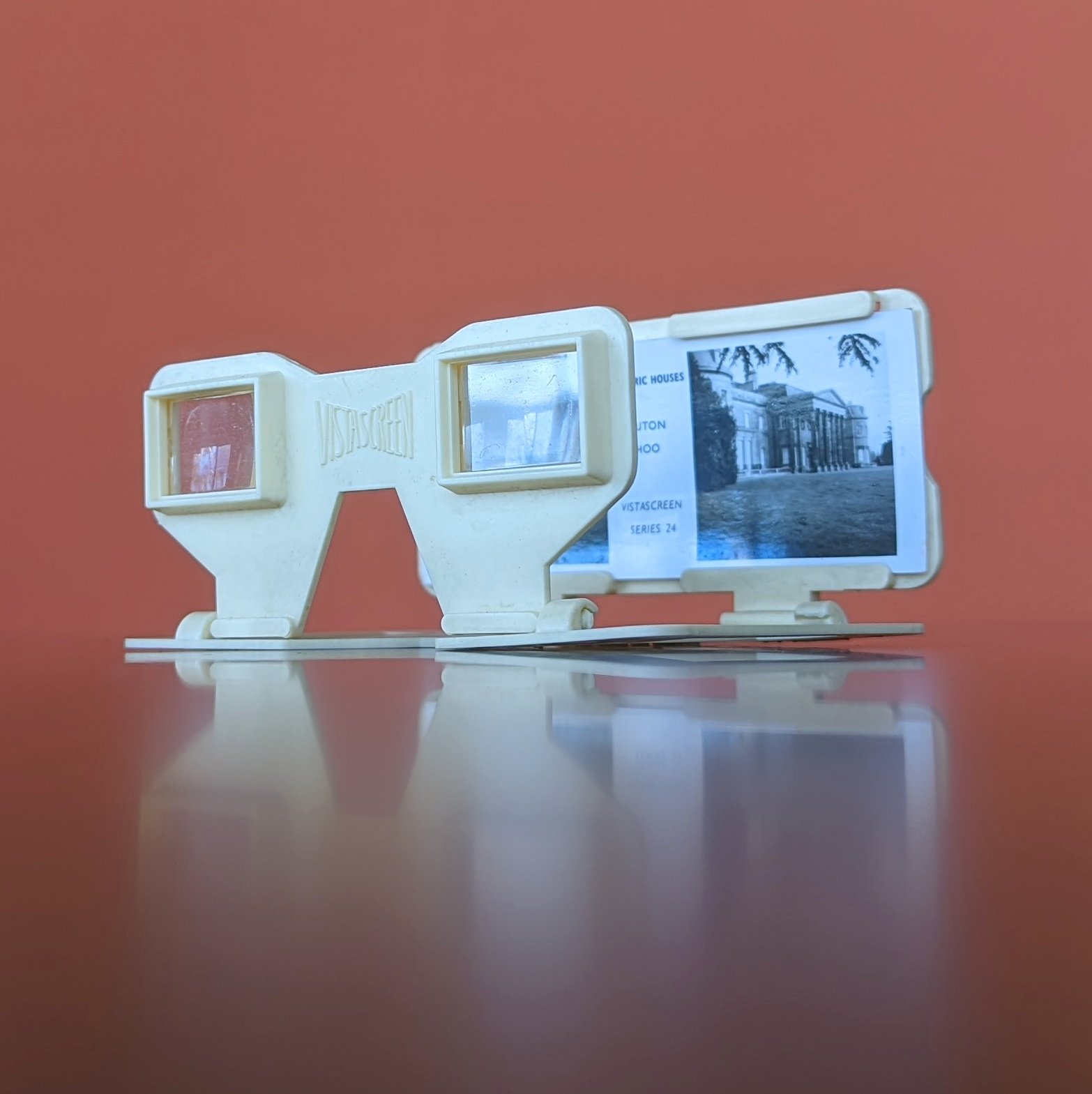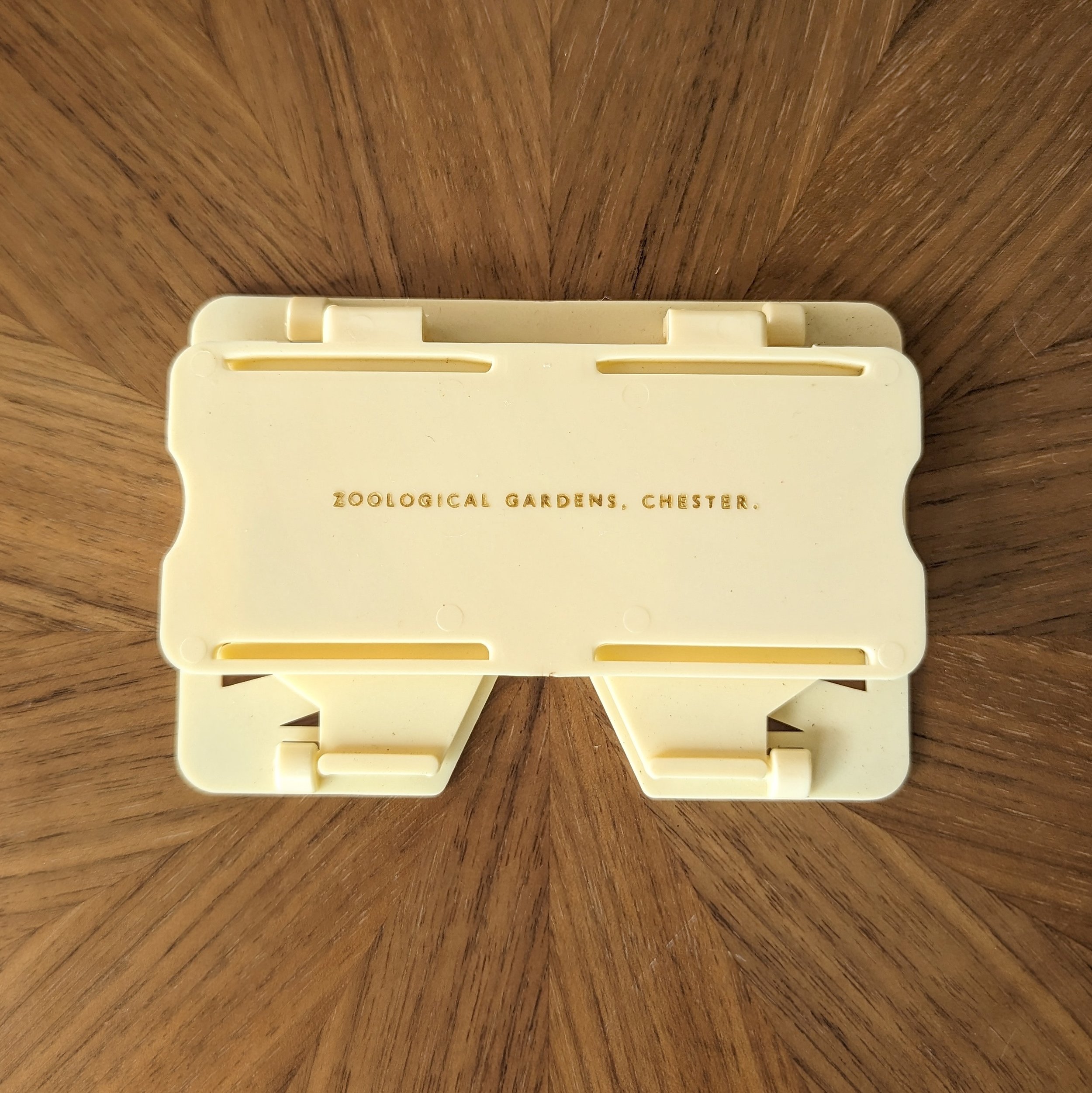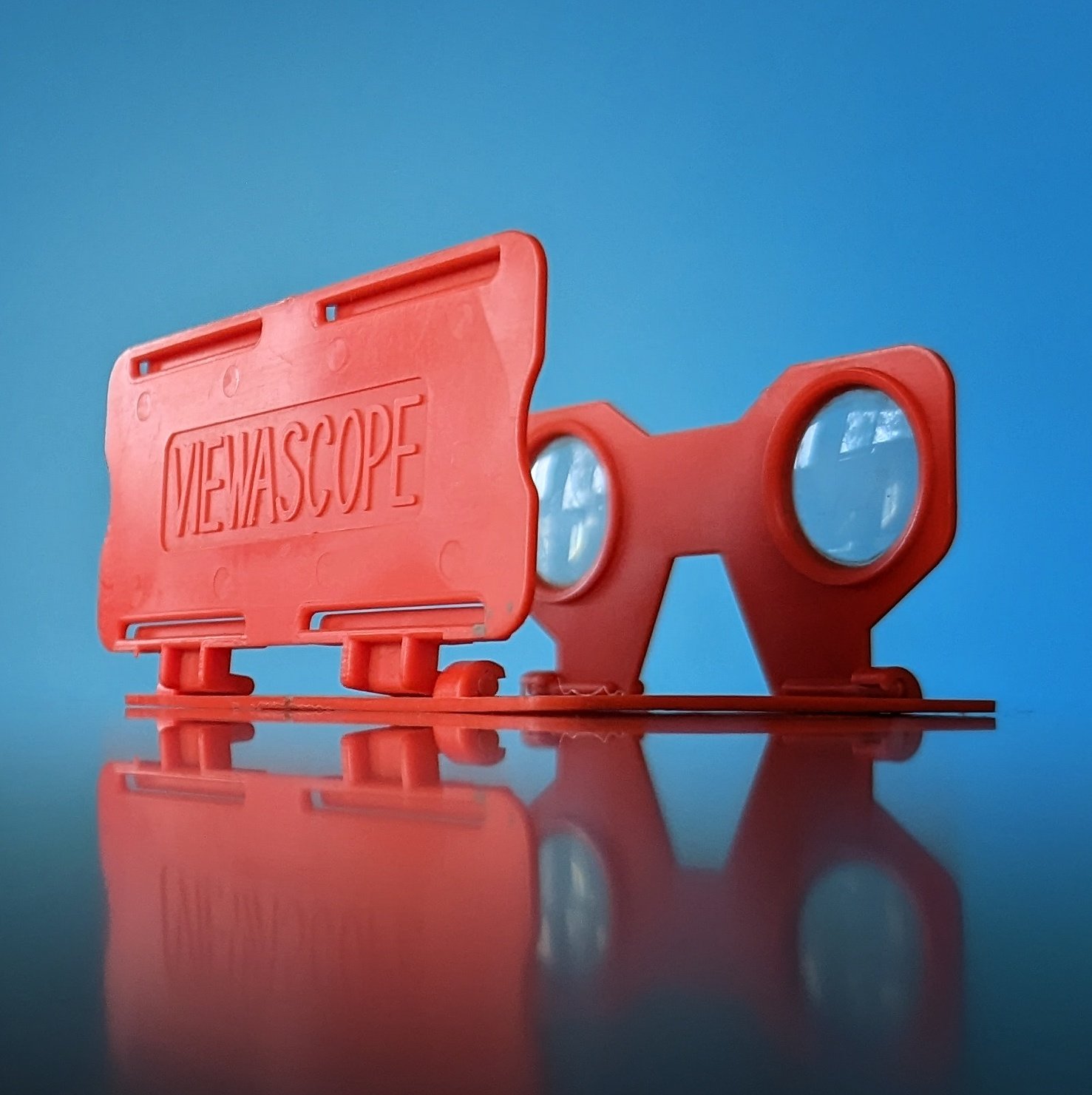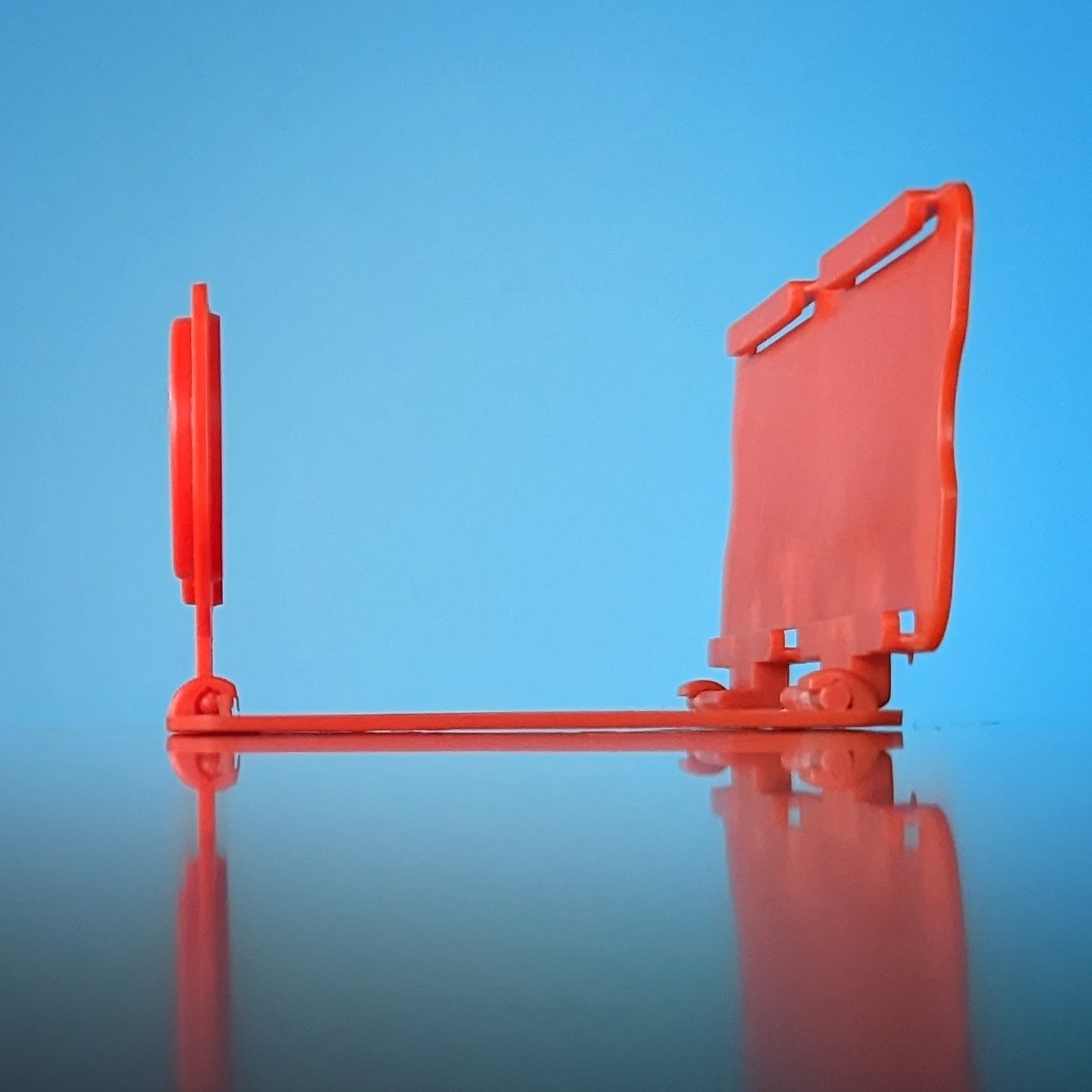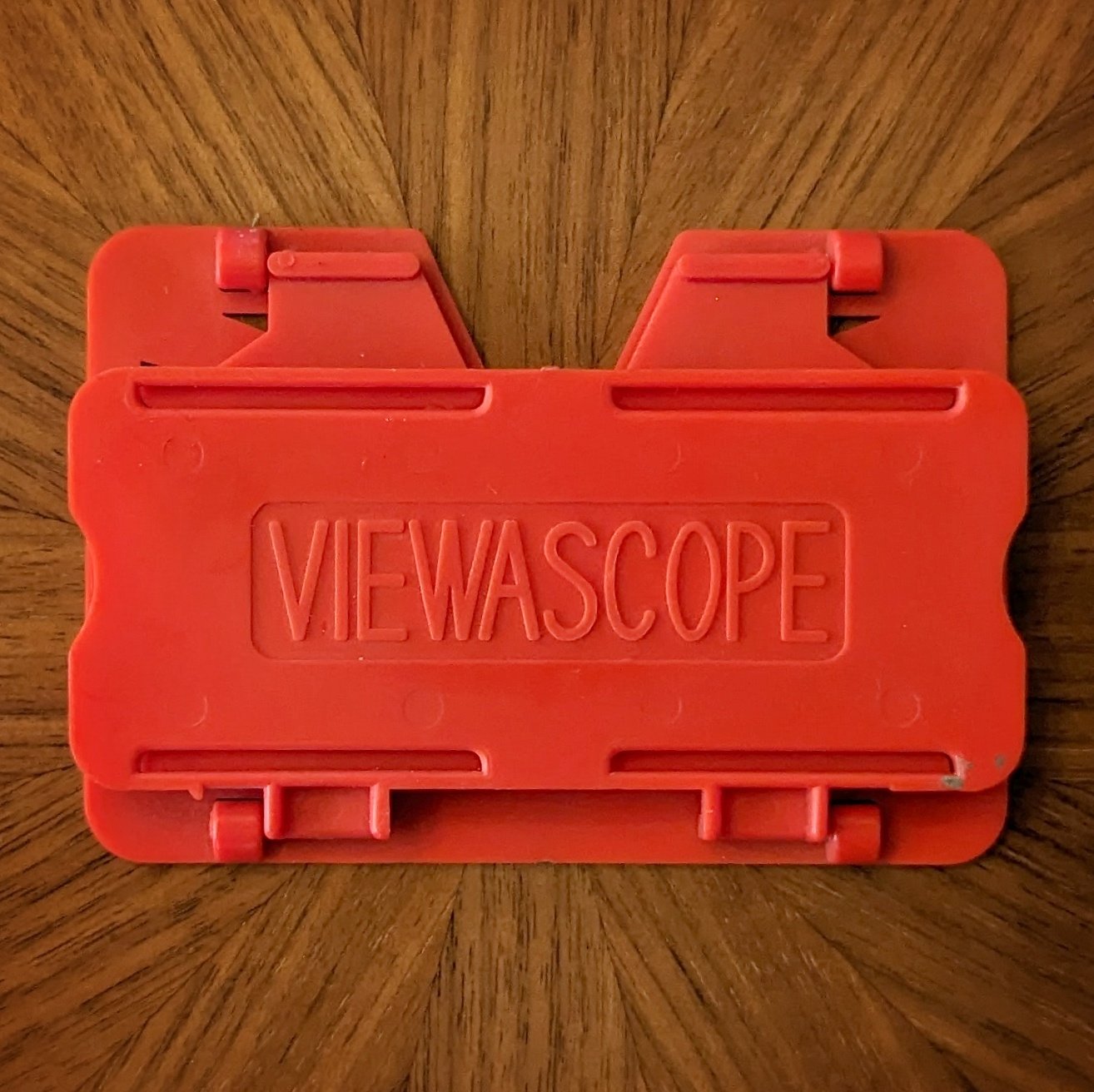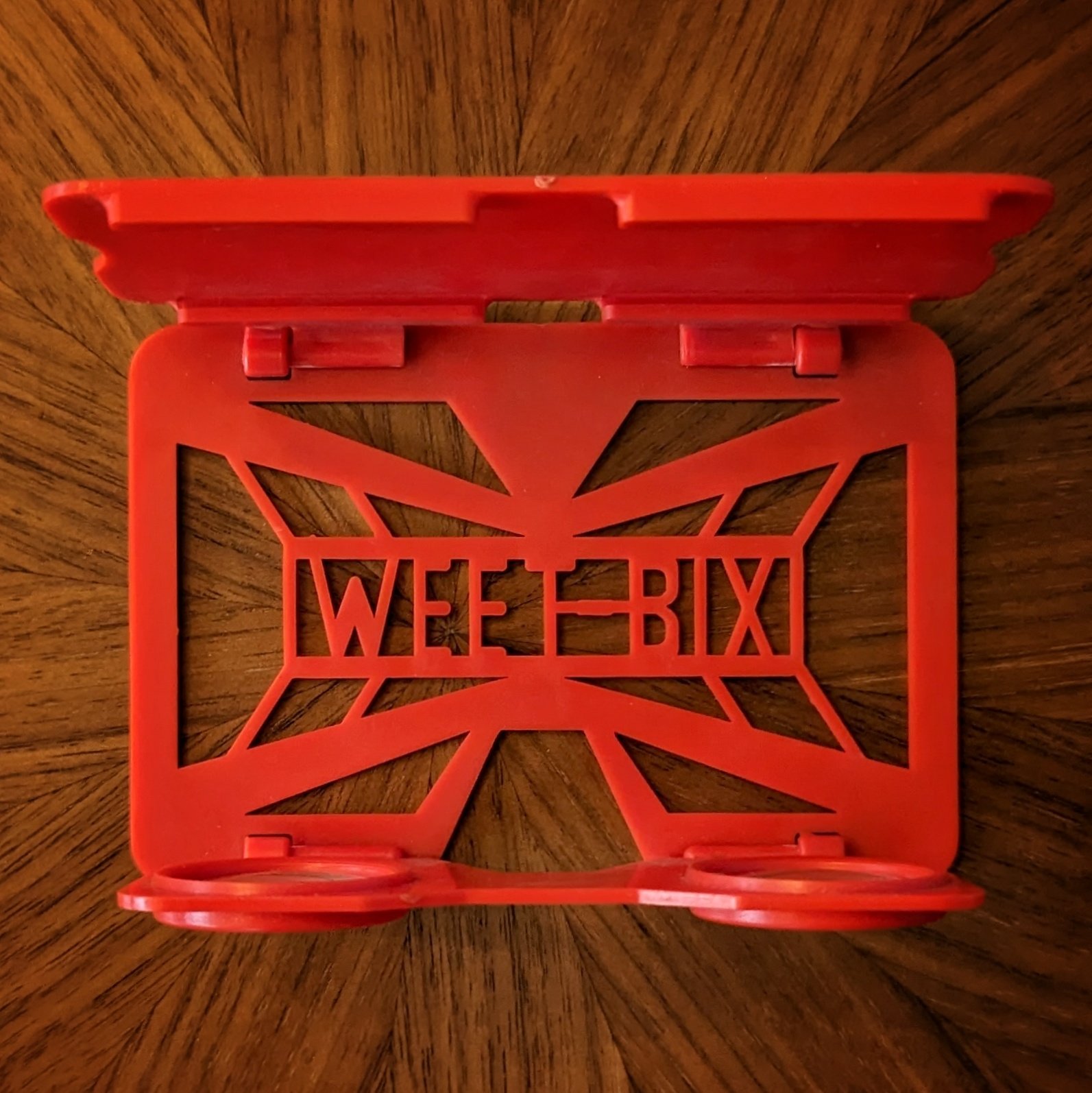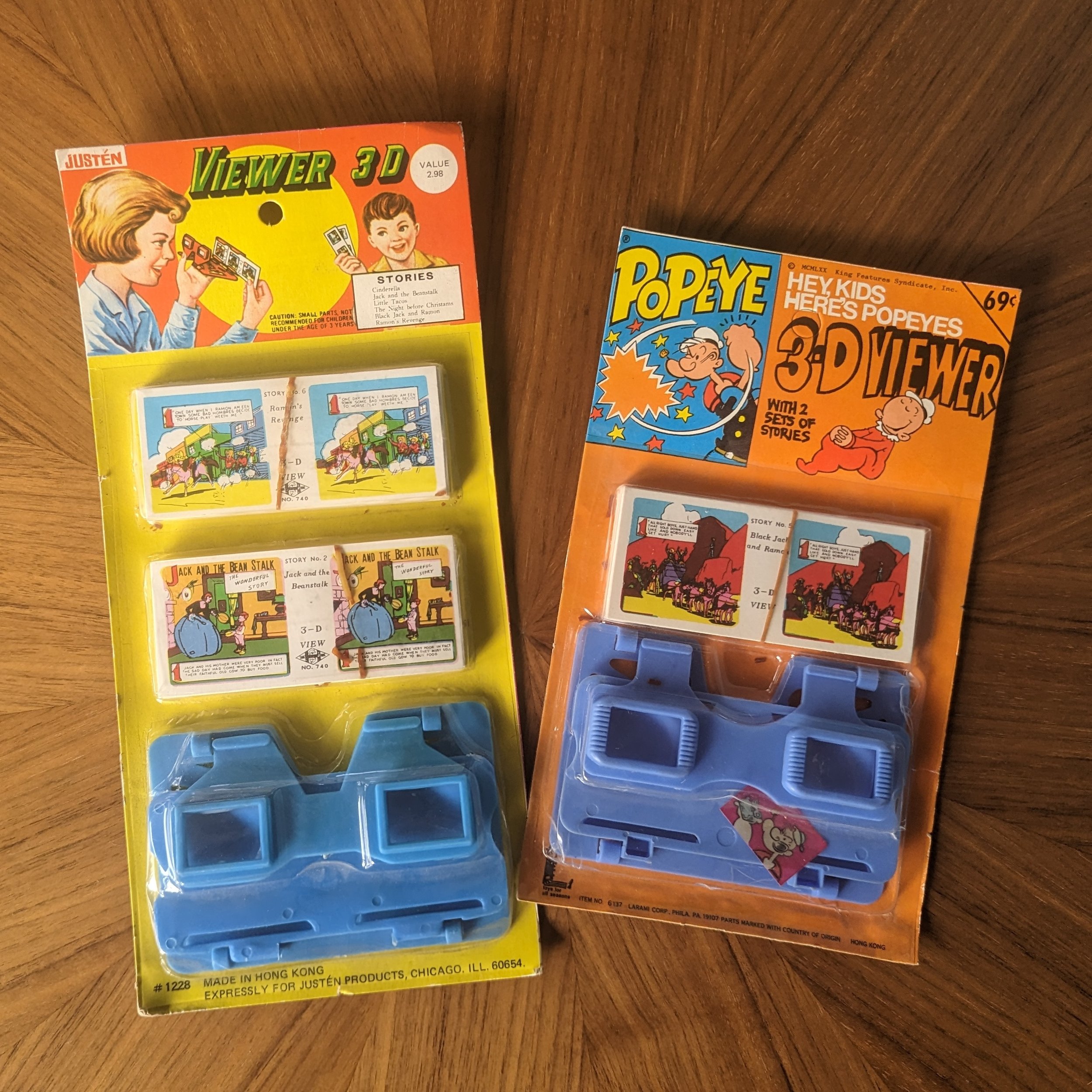VistaScreen, Weet-bix, & Weetabix 3D Viewers
England, 1950s & Australia, 1960s
The original standard VistaScreen, the Weetabix VistaScreen, and the Weet-bix Viewascope viewers are all somewhat related. Their folding, plastic designs are similar but they differ in branding, lens shape and the quality of the stereoviews produced for them. The original VistaScreen had the highest quality stereoviews of the 3 viewers: glossy, black & white images bound into booklets of 10 and individually boxed by subject. Stanley Long and the Spring brothers (Jack & Jeff) started VistaScreen 1956-ish and shot high-quality stereoviews for it. Later, the VistaScreen company was sold to Weetabix which used the product as a promotional viewer, producing lower-quality, color stereoviews that were given away free with their cereal. The Weet-bix cereal company in Australia (a sister company of Britain’s Weetabix cereal) had their own version of the viewer called the Viewascope. There are also a number of clones, including the TV Week, Lipton Tea, and 3D Picture Viewer. If you want to dive deep into the fascinating history of the VistaScreen company, check out Ian Ference’s VistaScreen blog post and Tim Goldsmith’s VistaScreen YouTube video.
Primary Material: Plastic
Media Format: Printed photo paper
Light Source: Natural light
Focus: Fixed
Interocular: Fixed
Original, Standard VistaScreen 3D Viewer - London
The original Vistascreen viewer has the name embossed on the front and die-cut on the bottom with the back of the cardholder blank. The lenses are rectangular and this particular viewer came in a special edition Christmas box with 3 boxes of the 10-view booklets.
Branded VistaScreen 3D Viewer
Some VistaScreen viewers are embossed with the name of a particular location or tourist spot. This one is from the Zoological Gardens in Chester.
Weetabix VistaScreen - London
Still retaining the VistaScreen name embossed on the front and die-cut on the bottom, the viewer now has the Weetabix branding on the back. Gone are the booklets of glossy black & white stereoviews, replaced with cheaper stereoviews that could be given away for free.
Weet-bix Viewascope - Australia
The Weet-bix and Weetabix companies were started by the same people with Weet-bix having started first in Australia. Their version of the viewer makes no reference to VistaScreen at all. They called it a Viewascope and there were at least 2 versions. One version retained the VistaScreen’s rectangular shaped lenses and had the name Viewascope die-cut on the viewer’s bottom. It also had a die-cut back (same as the Australian TV Week viewer). The 2nd style of Viewascope viewer had a solid back with Viewascope embossed on it, round lenses (same as the Australian Lipton Tea viewer) and the Weet-bix name die-cut on the bottom. The free stereoviews were called “True-to Life Stereo” and were similar in quality as the Weetabix stereoviews. The viewer could be purchased from the Sanitarium Health Food Company.
True-to-Life Stereo Color Slide Album - Australia
A great way to get kids to pester their parents to buy more Weet-bix: not only did they put free stereoview cards in the boxes but they created collector albums so it would be painfully obvious when you were missing a card or two!
VistaScreen & Clone Side-by-Side Comparison
In these 2 photos, you can see the branding of the various viewers on the die-cut bottoms and card-slot backs.
Clones from Hong Kong
These packages show similar viewers made in Hong Kong and marketed for Justen Products in Chicago, Illinois and Larami Corp. in Philadelphia, Pennsylvania. The cartoon stereoviews are similar to those that come with the Craftsmen’s Guild Tri-Story set.
